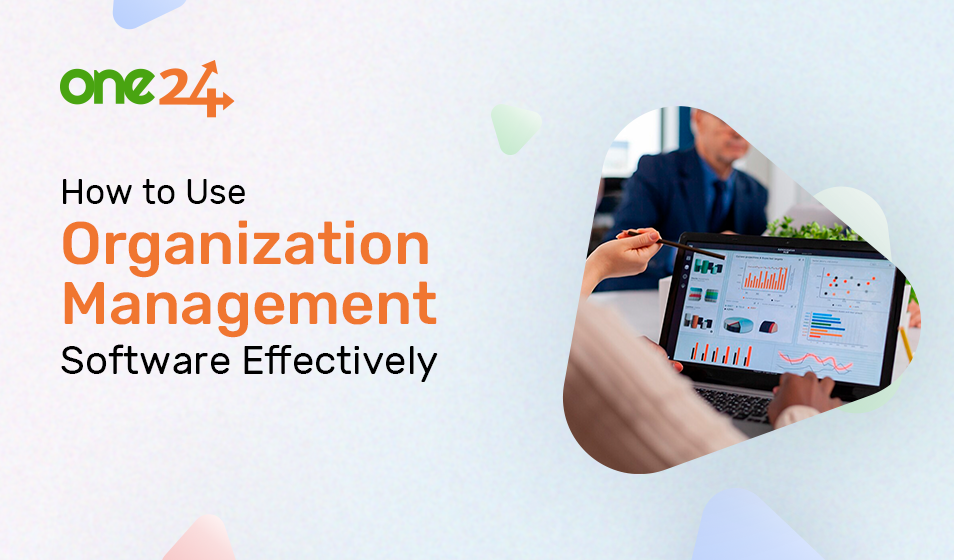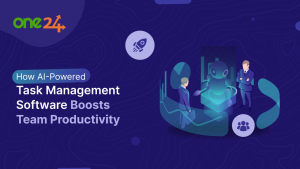In a fiercely competitive tech scenario of today, it seems that the idea of seamless working, communication, and increased productivity is often brushed against the stark realities of organizational chaos. The departments may include duplication of efforts, missed deadlines, and an unending, hurried pursuit of information. While attempting to carry on great operations, the decision-makers very crucially realize that a process is split off, hindering the work. So they think: Are there really any tangible results?
They are traps! These are drains on resources, impediments to innovation, and in the end, affect companies’ revenues. But the good thing is that the solution isn’t just an idle thought. An apt investment in organization management software is the powerful arsenal needed to bring order into chaos. And carry your organization to an entirely new level of growth. However, mere presence of the Organization Management Software shouldn’t be considered the end, the true value lies in its proper utilization.
What is Organization Management Software?
At the heart of it all, organization management software is an all-inclusive digital platform that helps smooth and centralize certain facets of your business operations. Like the command center of an enterprise, this software harmoniously and easily connects people, processes, and information. The following are common features found in such kinds of applications:
- Task and Project Management: For allocating tasks, monitoring advancement, establishing due dates, and overseeing complete projects from start to finish.
- Collaboration and Communication: Encouraging document sharing, shared workspaces, real-time communication, and group editing.
- Document Management: Document management is the safe organization, storage, and control of important company documents, guidelines, and practices.
- Performance tracking and reporting: Using data analytics and configurable dashboards, this approach offers insights into team and individual performance, project status, and overall business health.
The Transformative Benefits: Why Effective Use Matters
When implemented and utilized effectively, an organization management software delivers a multitude of benefits that directly address common business pain points:
- Better Productivity and Efficiency: With automated routine work, data centralization, and providing unobstructed visibility into business processes, more is done within the same amount of time. That reduction in administrative effort frees up valuable time that employees could otherwise spend doing high-value activities.
- Better Collaboration and Communication: Breaking down departmental communication gaps. Shared platforms and real-time communication software mean that everyone stays aligned and encourages a culture of shared ownership and transparency. This is critical for remote or hybrid teams.
- Better Decision-Making: Having access to real-time data and detailed reports gives decision-makers the ability to act on firm evidence. This evidence-based strategy results in careful strategic thinking as well as quick reaction to changes in the market or problems at the operational level.
- More Responsibility and Transparency: With terms of reference explicitly defined and an effective system tracking progress, individual and team responsibility are likely to be greater. Transparency facilitates trust and enables intervention as and when required.
- Effective Compliance and Risk Management: Businesses can enhance internal policy and regulatory compliance and lower the risk of error and non-compliance by implementing automated workflows and centralized document management.
- Scalability and Adaptability: This solution scales with your business, able to accommodate increasing numbers of users, data volumes, and changes in your operating needs.
Best Practices for Effective Implementation and Utilization
Merely getting the software is the first step. To truly unlock its potential, consider these best practices:
Establish Clear Goals and Requirements:
Determine your organization’s exact pain points. Target outcomes and essential functionalities required before even choosing a tool. What do you want to solve? What does success entail?
Select the Correct Software for Your Purposes:
There are too many choices out there. Pick a solution that matches your size, industry, price point, and integration needs. Prioritize ease of use, scalability, and strong security features.
Secure Executive Buy-In and Champion Adoption:
Leadership buy-in is critical. Illustrate the real payoffs of the software to all stakeholders and articulate its value proposition clearly. Appoint internal champions to drive usage and dispel initial resistance to change.
Phased Implementation and Pilot Programs:
Instead of a “big bang” opening, implement in phases. Pilot it first in a small department or team to iron out the kinks, solicit feedback, and demonstrate initial success.
Extensive Training and Continued Assistance:
Lack of proper training is one of the key causes of low user adoption. Offer extensive, hands-on training specific to various roles. And make sure that continued assistance and resources are easily accessible. Provide a combination of online guides, training sessions, and direct help.
Standardize Workflows and Processes:
Standardize organizational processes using the software. Document workflows, define responsible roles and responsibilities, and create templates for recurring tasks. To maintain consistency and productivity.
Integrate with Existing Systems:
To avoid data misfits and maximize efficiency, get your new organization management software to seamlessly integrate with your existing CRM, ERP, and other necessary systems.
Monitor, Analyze, and Refine:
Monitor key performance indicators (KPIs) for software use, productivity, and project closure on a regular basis. Collect user feedback to determine what can be improved. And optimize your processes and software configuration continuously.
Promote a Culture of Continuous Improvement:
Involves your teams in embracing the software as a tool for continuous improvement. Take checks on its effectiveness from time to time, identify innovative applications of its features, and adapt to evolving business needs.
The Path Forward
The path to an ideally structured and highly productive business is not an isolated incident, but an ongoing process of transformation. Organization management software is not just a tool, if properly implemented, it will change your company from reactionary to proactive, from disorganized to disciplined. By using these best practices, you can have a new age of productivity, teamwork, and profitability.
Don’t let the intricacies of today’s business keep your company in a rigid space. Spend on the right software, educate your people on how to use it, and see your strategic visions become an actual possibility, leading to long-term success year after year. The time for making the leap from chaos to control is today.







